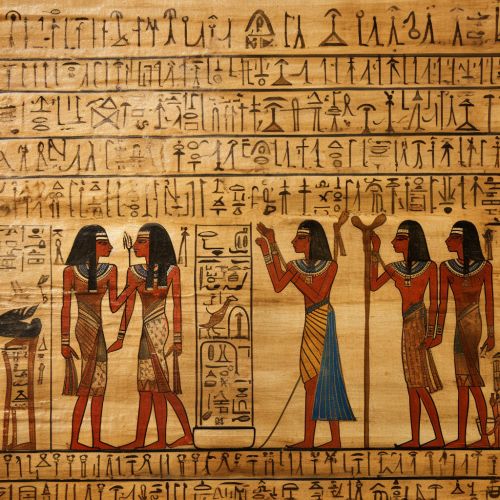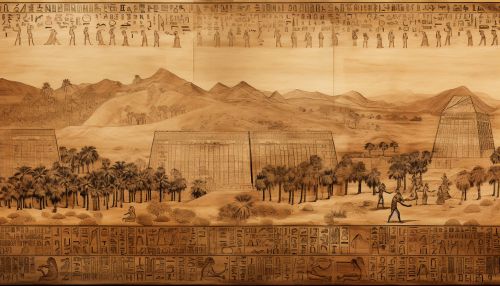Edwin Smith Papyrus
Overview
The Edwin Smith Papyrus is an ancient Egyptian medical text and the oldest known surgical treatise on trauma. This document, which is believed to have been written around the 17th century BCE, is named after Edwin Smith, the American collector of antiquities who purchased the papyrus in Luxor, Egypt in 1862. The papyrus is unique among the four principal medical papyri in existence that survive today. While other papyri, such as the Ebers Papyrus and London Medical Papyrus, are medical texts based in magic, the Edwin Smith Papyrus presents a rational and scientific approach to medicine in ancient Egypt.


Historical Context
The Edwin Smith Papyrus is thought to have been written in the Second Intermediate Period of Egypt, c. 1600 BCE. However, it is believed to be a copy of an earlier work, dating back to around 3000-2500 BCE during the Old Kingdom. This would make it contemporaneous with the Imhotep's step pyramid at Saqqara in Egypt, and even predating the Hippocratic Corpus, which dates back to c. 460–370 BCE. The papyrus was likely composed in ancient Thebes, as it bears the seal of the necropolis scribe Amenhotep.
Content
The Edwin Smith Papyrus consists of a total of 48 cases of injuries, fractures, wounds, dislocations and tumors. It details the type of the injury, examination of the patient, diagnosis and prognosis, and treatment. The cases are systematically arranged from head injuries to foot injuries, indicating an understanding of the concept of trauma. The papyrus also contains two magic spells to ward off disease, which is a common feature in other medical papyri.
Medical Knowledge
The Edwin Smith Papyrus demonstrates a surprisingly advanced level of medical knowledge for its time. It includes detailed anatomical observations, surgical procedures, and a classification system for traumatic injuries. The papyrus shows that ancient Egyptian physicians had a solid understanding of the structure and function of the human body. They were aware, for example, of the connection between the pulse and the heart, and were able to distinguish between the vessels, tendons, and nerves.
Legacy
The Edwin Smith Papyrus has had a significant impact on our understanding of ancient Egyptian medicine. It provides evidence that the Egyptians were practicing a systematic and scientific approach to medicine over a thousand years before Hippocrates. It also shows that they had a surprisingly sophisticated understanding of anatomy, injuries, and healing processes.
